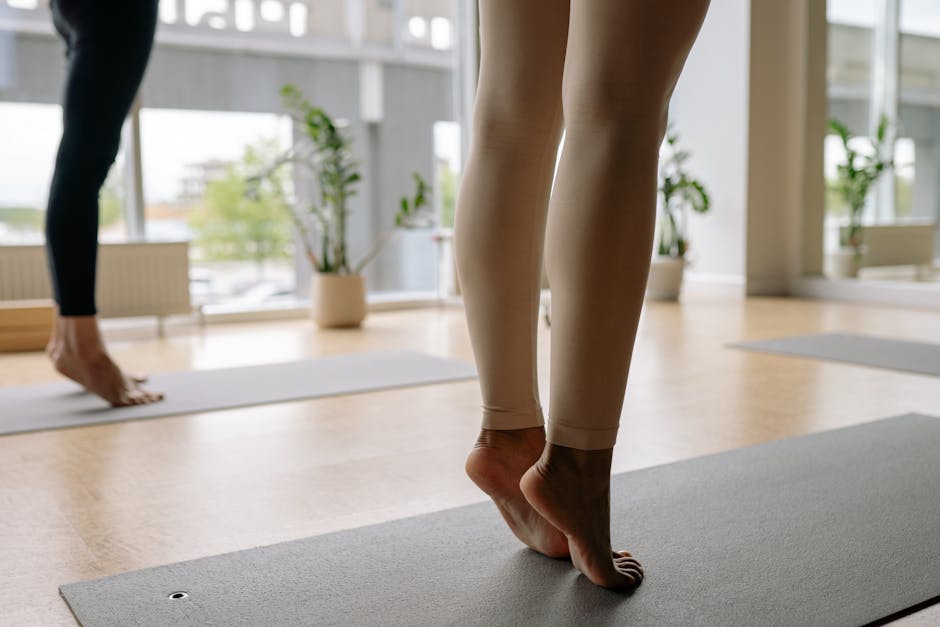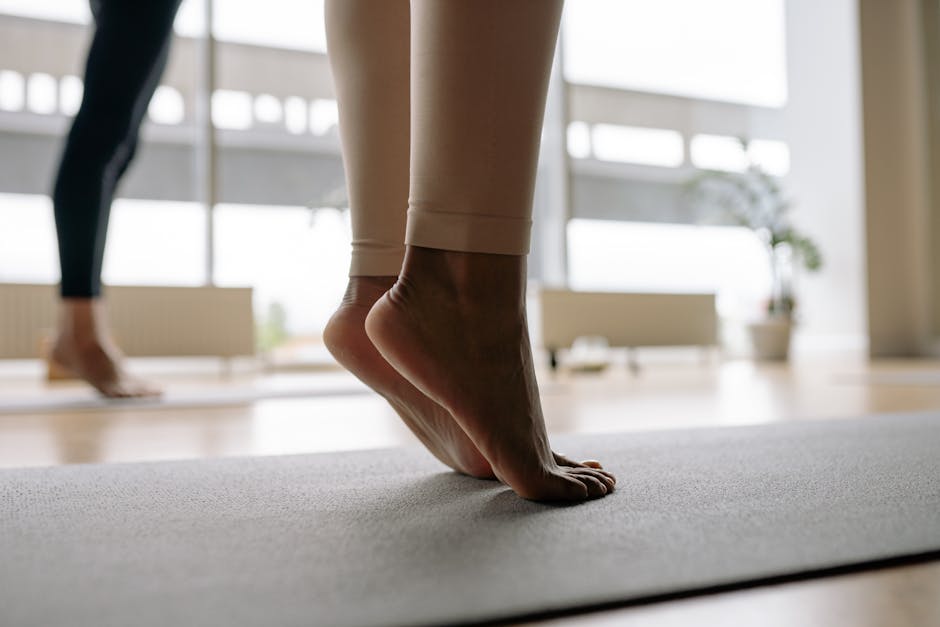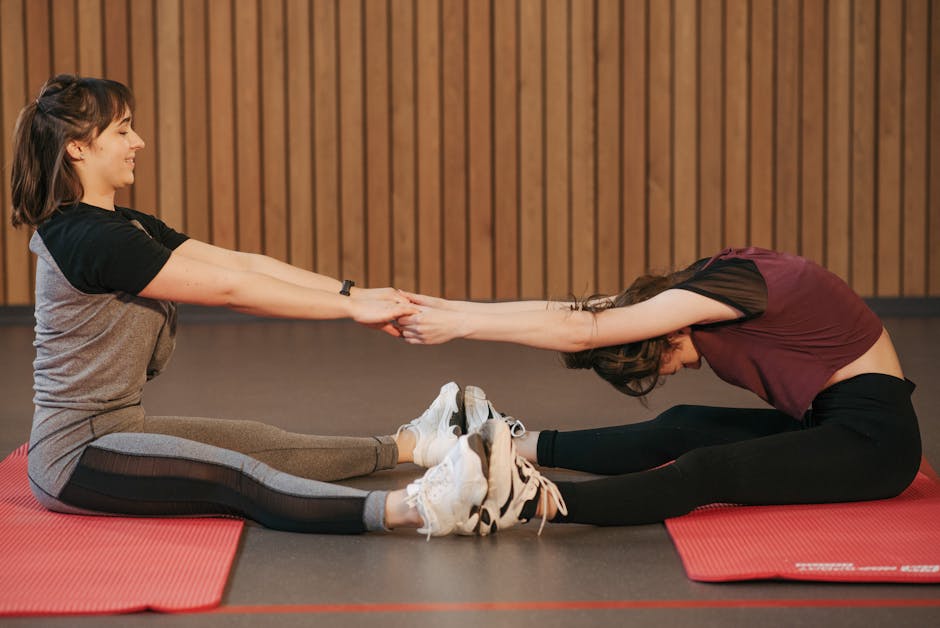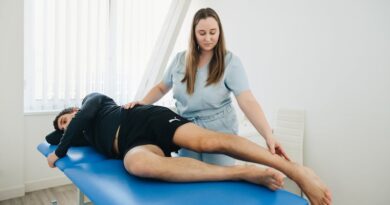Tips for Maintaining Flexibility: A Comprehensive Guide
Flexibility is an essential component of overall health and well-being. It not only allows us to move freely and perform daily tasks with ease but also plays a crucial role in preventing injuries and maintaining good posture. Whether you’re an athlete looking to improve performance, a desk worker aiming to combat the effects of prolonged sitting, or simply someone who wants to stay active and mobile as you age, maintaining flexibility should be a priority in your fitness routine.
In this comprehensive guide, we will explore a variety of tips and strategies to help you enhance and preserve your flexibility. From stretching techniques to the importance of mobility training, we’ll delve into the science behind flexibility, debunk common misconceptions, and provide practical advice to help you achieve your flexibility goals. So, let’s dive in and discover the key principles of maintaining flexibility!
The Science of Flexibility

Before we delve into specific tips for improving flexibility, it’s important to understand the science behind this crucial aspect of physical fitness. Flexibility refers to the range of motion in a joint or series of joints and muscles. It is influenced by various factors, including muscle elasticity, joint structure, age, gender, and overall physical conditioning.
When we perform stretching exercises, we aim to increase the length of muscle fibers and improve the elasticity of connective tissues, such as tendons and ligaments. This, in turn, helps to enhance joint mobility and reduce the risk of injuries. Regular stretching can also improve circulation, posture, and athletic performance.
Research has shown that flexibility training can have a positive impact on overall health, particularly in older adults. Studies have demonstrated that flexibility exercises can help improve balance, reduce the risk of falls, and enhance functional independence. By incorporating flexibility training into your fitness regimen, you can improve your quality of life and maintain your mobility as you age.
Benefits of Maintaining Flexibility

Flexibility training offers a wide range of benefits for individuals of all ages and fitness levels. Some of the key advantages of maintaining flexibility include:
1. Injury Prevention
One of the primary benefits of flexibility training is the reduced risk of injuries. By improving the elasticity of muscles and connective tissues, you can enhance joint mobility and reduce the likelihood of strains, sprains, and other musculoskeletal injuries. Flexibility also helps to improve posture and alignment, which can further prevent injuries caused by poor body mechanics.
2. Improved Athletic Performance
For athletes and fitness enthusiasts, flexibility is essential for optimal performance. Increased range of motion allows for more efficient movement patterns, leading to enhanced speed, power, and agility. By incorporating flexibility exercises into your training routine, you can improve your athletic performance and reduce muscle soreness and fatigue.
3. Enhanced Recovery
Flexibility training can help to accelerate recovery after intense workouts or competitions. Stretching exercises improve blood flow to the muscles, promoting the delivery of oxygen and nutrients essential for muscle repair. Stretching also helps to reduce muscle tension and soreness, allowing for faster recovery and improved overall recovery.
4. Stress Relief
Stretching and flexibility exercises have been shown to have a calming effect on the body and mind. By focusing on deep breathing and gentle movements, you can reduce stress and tension in the muscles and promote relaxation. Flexibility training can be an effective way to unwind after a long day and improve mental well-being.
5. Better Posture
Flexibility plays a key role in maintaining proper posture and alignment. Tight muscles and limited range of motion can lead to poor posture, which can cause discomfort and increase the risk of injuries. By incorporating stretching exercises into your daily routine, you can improve flexibility in key muscle groups, such as the hips, hamstrings, and chest, to support better posture and spinal alignment.
Effective Tips for Maintaining Flexibility

Now that we’ve explored the benefits of flexibility training, let’s delve into some effective tips and strategies to help you improve and maintain your flexibility:
1. Incorporate Dynamic Stretching
Dynamic stretching involves moving through a full range of motion to warm up the muscles and prepare them for activity. Unlike static stretching, which involves holding a stretch for an extended period, dynamic stretching focuses on fluid movements that mimic the actions you’ll perform during your workout or sport. Dynamic stretching can help improve flexibility, enhance muscle activation, and reduce the risk of injuries.
Examples of dynamic stretches include leg swings, arm circles, walking lunges, and high knees. Incorporate dynamic stretching into your warm-up routine before engaging in more intense physical activity to prepare your muscles and joints for movement.
2. Practice Static Stretching
Static stretching involves holding a stretch for a prolonged period, typically 15-30 seconds, to lengthen the muscle fibers and improve flexibility. This type of stretching is often performed after a workout or as part of a cool-down routine to help relax the muscles and prevent stiffness. Static stretching can target specific muscle groups and help improve overall flexibility.
Focus on key muscle groups, such as the hamstrings, quadriceps, calves, hip flexors, and shoulders, when performing static stretches. Hold each stretch for 15-30 seconds and repeat 2-3 times to maximize the benefits. Remember to breathe deeply and relax into each stretch to avoid straining the muscles.
3. Try Yoga and Pilates
Yoga and Pilates are excellent forms of exercise that not only improve flexibility but also enhance strength, balance, and mind-body connection. Both disciplines focus on controlled movements, breath awareness, and proper alignment to promote overall physical and mental well-being. Yoga incorporates a variety of poses and sequences that target different muscle groups and increase flexibility, while Pilates emphasizes core strength, stability, and flexibility.
Consider adding yoga or Pilates classes to your fitness routine to experience the benefits of these practices. Whether you’re a beginner or a seasoned practitioner, you can find classes suited to your level and goals. Regular participation in yoga or Pilates can help you improve flexibility, reduce stress, and cultivate a sense of mindfulness and relaxation.
4. Foam Rolling and Self-Myofascial Release
Foam rolling and self-myofascial release techniques can help alleviate muscle tightness and improve flexibility. Foam rollers are cylindrical tools made of dense foam that can be used to apply pressure to tight or sore muscles, releasing tension and promoting blood flow. Self-myofascial release involves using a foam roller or massage ball to target specific trigger points and knots in the muscles.
Incorporate foam rolling into your post-workout routine to help reduce muscle soreness and improve flexibility. Focus on areas of tightness or discomfort, such as the IT band, quadriceps, calves, and upper back. Perform slow, controlled movements over the foam roller, pausing on tender spots to allow the muscles to release and relax.
5. Maintain a Consistent Stretching Routine
Consistency is key when it comes to maintaining flexibility. Make stretching a regular part of your daily routine to improve flexibility and prevent muscle tightness. Set aside time each day to perform a series of stretches targeting major muscle groups, such as the hamstrings, quadriceps, hips, chest, and shoulders.
Whether you prefer to stretch in the morning to wake up your body, during your lunch break to combat sitting all day, or in the evening to unwind before bed, find a time that works best for you. Aim to stretch for at least 10-15 minutes each day to maintain and improve flexibility over time. Remember to listen to your body and avoid pushing beyond your limits to prevent injury.
6. Stay Hydrated and Eat a Balanced Diet
Proper hydration and nutrition play a vital role in maintaining flexibility and overall physical health. Dehydration can lead to muscle cramps, stiffness, and reduced joint mobility, hindering your flexibility goals. Ensure you drink an adequate amount of water throughout the day to stay hydrated and support muscle function.
In addition to hydration, focus on eating a balanced diet rich in fruits, vegetables, lean proteins, and whole grains to provide your body with essential nutrients for optimal flexibility and recovery. Foods high in antioxidants, such as berries, leafy greens, and nuts, can help reduce inflammation and support muscle recovery after exercise. Incorporate a variety of foods into your meals to ensure you’re getting the nutrients your body needs to stay flexible and healthy.
7. Listen to Your Body and Rest as Needed
Lastly, it’s crucial to listen to your body and rest as needed to prevent overtraining and promote recovery. Pay attention to how your body feels during and after stretching exercises. If you experience pain, discomfort, or excessive tightness, take a break and reassess your approach to stretching.
Rest days are an essential part of any fitness routine, allowing your muscles time to recover and repair. Avoid pushing through pain or fatigue to avoid injury and maintain long-term flexibility. Incorporate active recovery activities, such as gentle yoga, walking, or swimming, on rest days to promote blood flow, reduce muscle tension, and support recovery.
Common Misconceptions About Flexibility

Despite the numerous benefits of maintaining flexibility, there are several common misconceptions surrounding this aspect of physical fitness. Let’s debunk some of the myths and clarify the facts:
1. Myth: You’re Either Flexible or Not
Many people believe that flexibility is an innate trait that you’re born with and can’t change. In reality, flexibility is a trainable quality that can be improved through regular stretching and mobility exercises. While genetics may play a role in your natural flexibility, anyone can enhance their range of motion and joint mobility with the right training and consistency.
2. Myth: Stretching Before Exercise Prevents Injuries
Contrary to popular belief, static stretching before exercise may not be the most effective way to prevent injuries. Research has shown that static stretching can temporarily decrease muscle strength and power, potentially compromising performance. Instead, consider incorporating dynamic stretching or a light cardio warm-up to prepare your muscles and joints for physical activity.
3. Myth: Flexibility Declines With Age
While it’s true that flexibility tends to decrease with age, it’s not an inevitable consequence of getting older. By engaging in regular flexibility training and mobility exercises, you can maintain and even improve your range of motion as you age. Flexibility is a vital component of healthy aging, helping to prevent falls, maintain independence, and improve overall quality of life.
Conclusion
To wrap things up, maintaining flexibility is essential for overall health, well-being, and performance. By incorporating a variety of stretching exercises, yoga, Pilates, and self-myofascial release techniques into your fitness routine, you can improve joint mobility, reduce the risk of injuries, and enhance athletic performance. Consistency, proper hydration, nutrition, and listening to your body are key factors in maintaining flexibility and preventing overtraining.
Whether you’re a seasoned athlete looking to improve performance, a fitness enthusiast aiming to stay active and mobile, or someone seeking to enhance flexibility for better overall health, these tips and strategies can help you achieve your flexibility goals. Remember that flexibility is a trainable quality that requires time, patience, and dedication to develop and maintain. Embrace the journey to improved flexibility and enjoy the physical and mental benefits that come with it!




